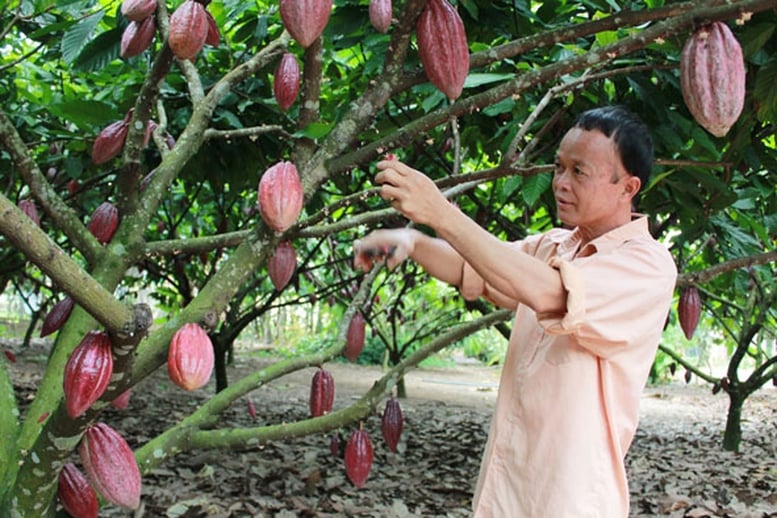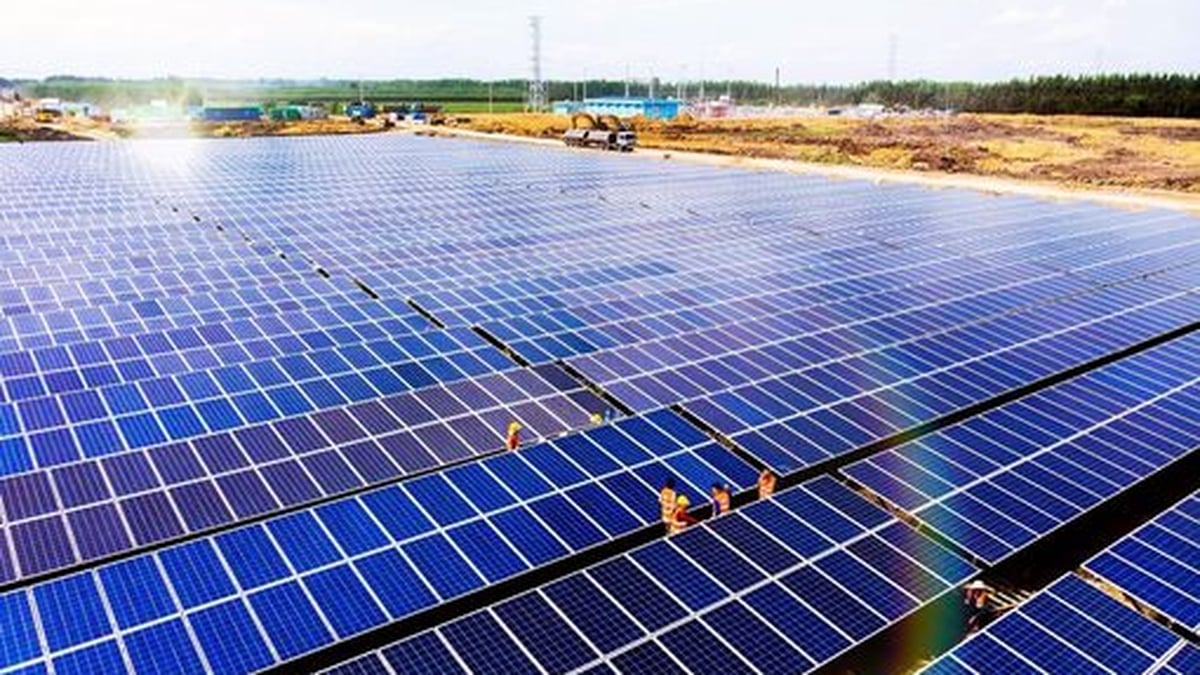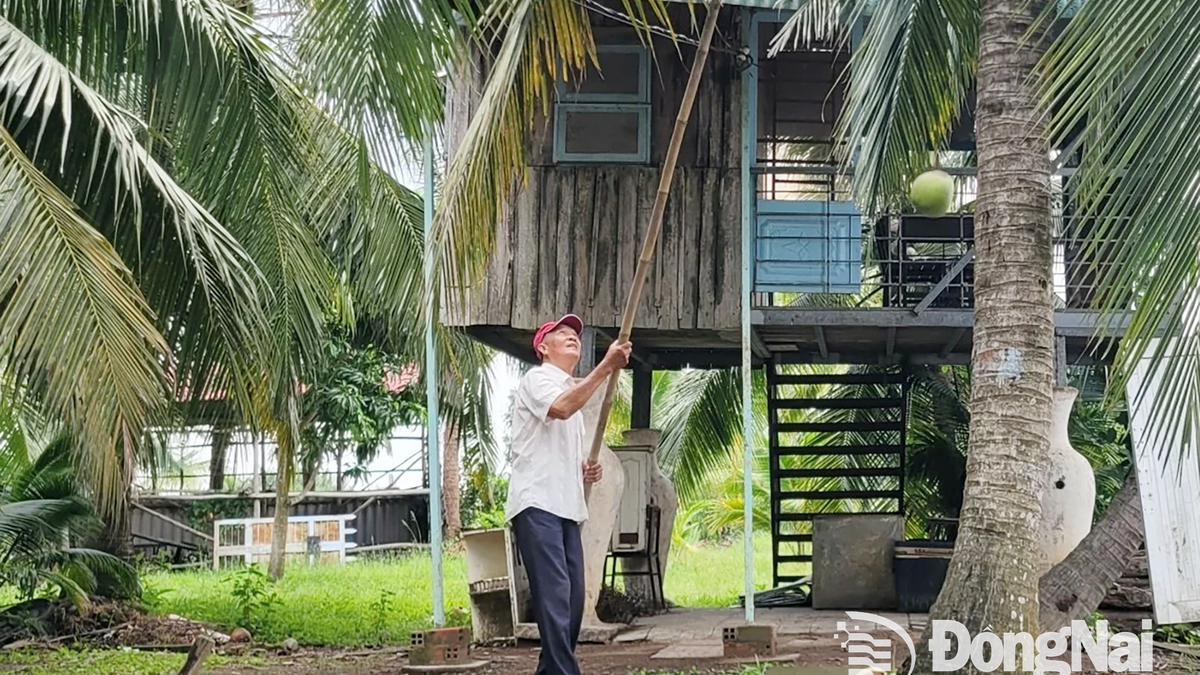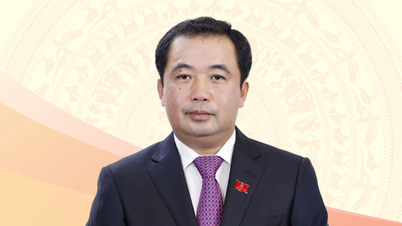
Cocoa is an industrial crop that requires long-term investment and high technology, not suitable for spontaneous models.
Skyrocketing prices
The record price of cocoa products has brought joy to farmers as each hectare brings in an income of 400-450 million VND. However, behind this "golden" opportunity are great challenges, especially when the cocoa growing area is at risk of rapid growth, threatening the sustainable development of the industry.
A global supply shortage, with about 0.6 million tonnes less than demand, is the main reason for the spike in cocoa prices. Ivory Coast and Ghana – which account for 70% of the world’s cocoa production – are being affected by climate change, drought and pests, adding to buyers’ concerns.
In Vietnam, according to the Department of Crop Production and Plant Protection, Ministry of Agriculture and Environment , although the cocoa growing area is only over 3,000 hectares with a dry bean output of about 3,500 tons/year, very modest compared to coffee (730,500 hectares) and cashew (300,800 hectares); the quality of cocoa, especially the rare Trinitario variety, has created a unique flavor, attracting international importers. Major chocolate brands have opened factories in Vietnam, prioritizing on-site processing of raw materials for export, targeting the high-end segment.
However, the sharp increase in cocoa prices is putting pressure on the supply chain. Cooperatives are having difficulty raising capital to purchase raw materials, while limited domestic production has led to fierce competition with traders. For businesses, especially in the chocolate industry, the situation is even more serious.
Mr. Hoang Danh Huu, CEO of EDE Farm Service Trading Company Limited, said that the 4-5 times increase in raw material prices has put businesses at risk of accumulated losses, forcing many units to produce at a moderate level, reduce scale or switch to products with lower cocoa ratios to maintain operations. The consumer market only accepts a retail price increase of about 15%, while input costs have increased many times, putting the global chocolate industry at risk of supply chain disruption.
Vietnam has great potential to develop the cocoa industry, especially with the unique indigenous Trinitario variety, which is highly valued in the international market.
Mr. Le Quoc Thanh, Director of the National Agricultural Extension Center, Ministry of Agriculture and Environment, said that up to now, Vietnam has 3,471 hectares of cocoa, with a harvested area of 2,836 hectares, an output of 4,786 tons of dry beans, and a yield of 16.9 quintals of dry beans/hectare. Cocoa production is concentrated in the Central Highlands, Southeast, Mekong Delta and South Central Coast regions.
The model of production linkage and investment in concentrated cocoa production has been implemented by some enterprises such as Thanh Dat Cocoa Trading and Service Company Limited, Binon Cacao Company (Ba Ria-Vung Tau) with a production and processing chain, combined with experiential tourism. Trong Duc Cocoa Company Limited (Dong Nai), Cao Nguyen Xanh Company (Dak Lak), Puratos Grand - Place Vietnam Company Limited... have invested in production chains and developed large-scale concentrated cocoa areas. 100% of Vietnamese cocoa beans are fermented, ensuring the quality of buyers, processors and exporters.
Mr. Justin Jacquat, Asia-Pacific Cocoa Manager, said that although Vietnam's output of 3,500 tons/year is small compared to countries like Malaysia or Indonesia (200,000 tons/year), its unique flavor helps Vietnamese cocoa dominate the high-end segment. To maximize this advantage, the industry needs to focus on deep processing, applying high technology, and building a sustainable chain from farmers to businesses.
With an expected increase of 500 hectares by 2025, the industry needs to prioritize growing areas that meet international standards, ensuring traceability and quality. Intercropping with coffee, cashews, or bananas, which require less maintenance, can bring double economic benefits, but must be accompanied by proper planning and advanced techniques.
Farmers’ excitement over rising cocoa prices is fueling a trend of expanding planting areas, recreating a scenario that has happened to many other agricultural products in Vietnam. During the golden period of 2012, cocoa acreage reached 25,700 hectares, but by 2023, this figure had dropped by nearly 90% due to unstable prices and competition with other crops such as durian and avocado. If left unchecked, mass planting following the trend could lead to oversupply, causing prices to collapse and losing long-term value.
Experts warn that cocoa is an industrial crop that requires long-term investment and high technology, and is not suitable for a spontaneous model. Lack of planning and management, combined with unsuitable soil conditions, will create undesirable consequences. The industry needs to avoid repeating the lessons of coffee or pepper, where sudden increases in production caused a surplus crisis. Instead, a sustainable strategy, focusing on quality and high-end markets, will help Vietnam rise in the Southeast Asian region.
Do Huong
Source: https://baochinhphu.vn/nhung-thac-thuc-cua-nganh-ca-cao-truoc-su-tang-truong-nong-102250507142138549.htm



































































































Comment (0)